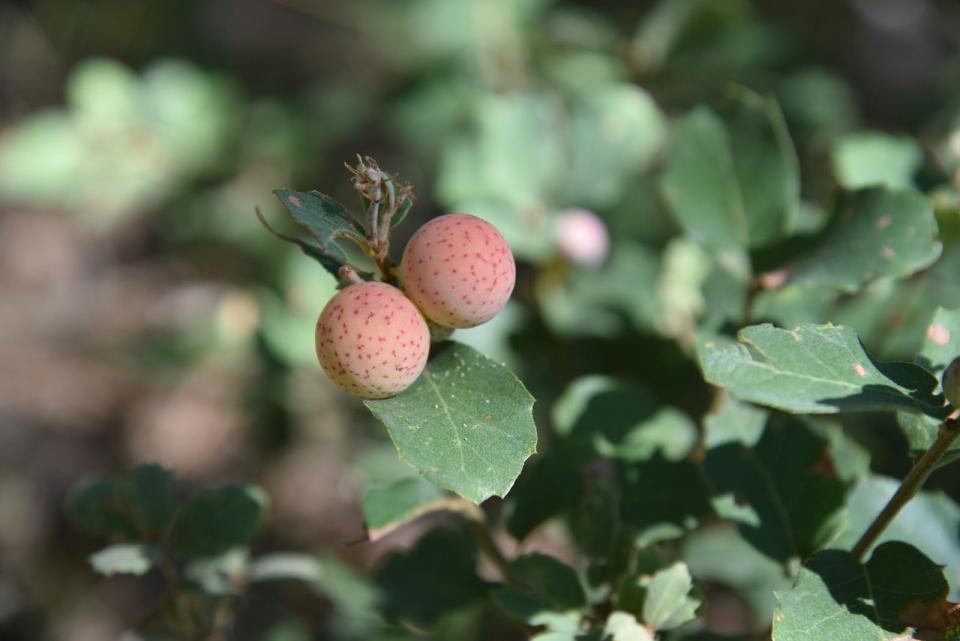Oak tree galls can be unsightly, but they're a part of nature
Oak trees are plentiful in the region, though we still see some issues with oak trees. There are a few fungal diseases that can affect oaks as well as insects that can do damage.
A common occurrence on oak trees is the formation of oak gall growths or deformities on leaves, twigs, or stems. Galls are not a disease; interestingly enough, they are caused by a group of small insects known as gall makers.
Galls are part of the insect’s reproductive cycle and provide a protected enclosure for larvae. These gall makers release chemicals into the stem or branch, which cause the oak tree to respond by producing hormones. The hormones then produce the gall that is full of protein, providing a source of food for the larvae.
There are several types of galls such as jumping oak gall, oak apple gall, horned oak gall, and wool sower galls. The type of gall formed depends on tree species and insect species. It is also important to know that gall makers must attack at a particular time of year to be successful. Generally, gall makers attack oak trees around bud break in the spring.
More: Have evergreens in your landscaping? Watch out for these diseases.
Most gall makers are tiny wasps. In North America, we have identified over 700 species of tiny wasps; most are capable of causing oak galls. Entomologists have struggled with proper identification however. The wasp gall makers are unique in that they can have different body structures depending on the generation which, along with a complex life cycle, has confused their identification. Each species causes a distinct type of gall on a specific plant part. Their offspring will often cause a different type of gall, on a different plant part.
So you can see why it is often difficult to get a proper identification.
Galls typically do not cause enough damage to the tree to be of concern, but this doesn’t mean they are helpful to the tree. Every year, I talk with landowners about galls explaining the difficulty with controlling them. There are many barriers to good control methods.

First of all, mature oak trees are tall, making it difficult to apply an insecticide easily or safely. Secondly, as I mentioned, identifying the insect species causing the galls is difficult at best. Proper identification, the life cycle of the species and timing of an insecticide application all play a factor on good control.
Insecticide applications are most often ineffective even when we time it correctly; galls are thick, hardened material and good penetration is difficult or not possible. Considering all these factors, control products are typically not recommended for mature oak trees. For younger trees, it is possible to trim out affected branches to reduce the effects.
Some earlier botanists believed galls were a typical structure of the tree. To many, these galls are unsightly, but they are a part of the natural system associated with oak species and there will be high- and low-population cycles. Perhaps, in a few years, galls will be less prevalent than now.
More: Here are some ideas for using mulch to improve your garden and landscape
Controlling galls on mature oak trees typically is not feasible for the typical homeowner. The good news is most of the time, galls will not kill the tree unless other factors have weakened the health of the oak.
Most of the wasps that cause galls are considered beneficial insects and as with any ecosystem, killing them would likely have unintended consequences. For now, we likely will have to accept oak galls as part of nature.
P. Andrew Rideout is the UK Extension Agent for Horticulture and can be reached at pandrewrideout@uky.edu.
This article originally appeared on Henderson Gleaner: Oak tree galls can be unsightly, but they're a part of nature

